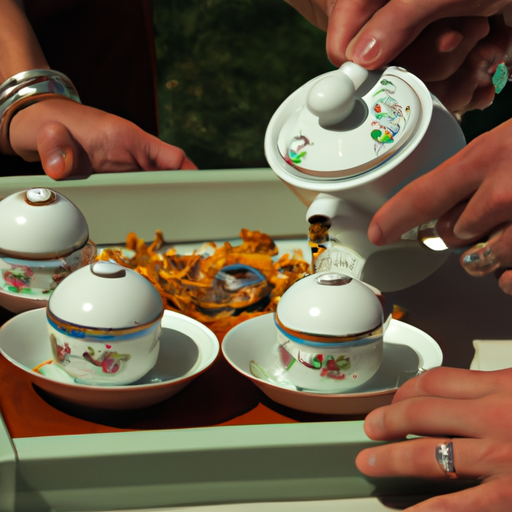Tea Traditions: Wedding Tea Ceremonies From Around The Globe
As a tea fan, it takes mere moments for you to steep your way into the history, health benefits, and various uses of tea. But have you ever been part of a wedd-tea-ng ceremony? Across the globe, tea has been embedded in various cultures' wedding rituals to symbolize unity, prosperity, and infinite joy. In this post, we explore a few unique wedding tea ceremonies that fewtea-ly bring people to experience these heartwarming traditions.
Chinese Wedding Tea Ceremony (茶禮)
In traditional Chinese weddings, the tea ceremony is a momentous event where the bride and groom pay tribute to their parents, relatives, and ancestors by serving them tea. The bride and groom kneel or bow before their elders and present the tea, prepared with utter precision. Symbolizing purity, stability, and fertility, tea leaves are chosen according to the couple's preference, usually aged Pu-erh or elaborate Longjing. The wedding tea set, served with sweet treats or dried fruit, is often adorned with the symbols of the dragon (male) and the phoenix (female), representing a harmonious union.
| Significant Element | Explanation |
|---|---|
| Formal Order | The bride and groom serve the tea first to their parents, followed by their grandparents, and then extended family members |
| Tea Type | Aged Pu-erh or Longjing |
| Accessory | Lotuses and red dates are placed in the teacup to symbolize fertility |
Japanese Wedding Tea Ceremony (San-san-kudo, 三三九度)
San-san-kudo, which translates to "three-three-nine times," is a traditional Japanese wedding tea ceremony that highlights the bonding of the couple and their families. The ceremony involves three distinct steps:
- The couple drinks sake (rice wine) from three small cups stacked on top of one another.
- The couple offers sake to their respective parents using the same cups.
- The couple offers oolong tea, symbolizing purity and faithfulness, to one another and then to their parents.
| Significant Element | Explanation |
|---|---|
| Sake Cups | Three cups represent heaven, earth, and humankind |
| Tea Type | Oolong tea, served after the sake ceremony |
| Number 9 | Nine symbolizes happiness in Japanese culture |
Korean Wedding Tea Ceremony (Paebaek, 파백)
Paebaek is a Korean wedding tea ceremony that takes place after the exchange of vows. The ceremony begins with a traditional bow to the groom's family, and the bride and groom will serve tea or Korean liquor to their in-laws while seated on cushions. The most commonly used tea during the Paebaek ceremony is Jujube tea, also known as Daechucha.
| Significant Element | Explanation |
|---|---|
| Tea Type | Jujube tea (Daechucha) |
| Offerings | The couple offers chestnuts and jujubes to their parents as symbols of fertility |
Tea is not only a delightful beverage but also an essential part of various rituals and cultures worldwide. So, set your kettles to brew and join us in raising a cup of tea to the happy couples who choose to weave this wonderful tradition into their brew-tiful wedding ceremonies. We encourage you to share your own experiences, thoughts, and tea-ceremony favorites in our discussion area below. May you find love, unity, and unending happiness - all in one heartwarming cup.
